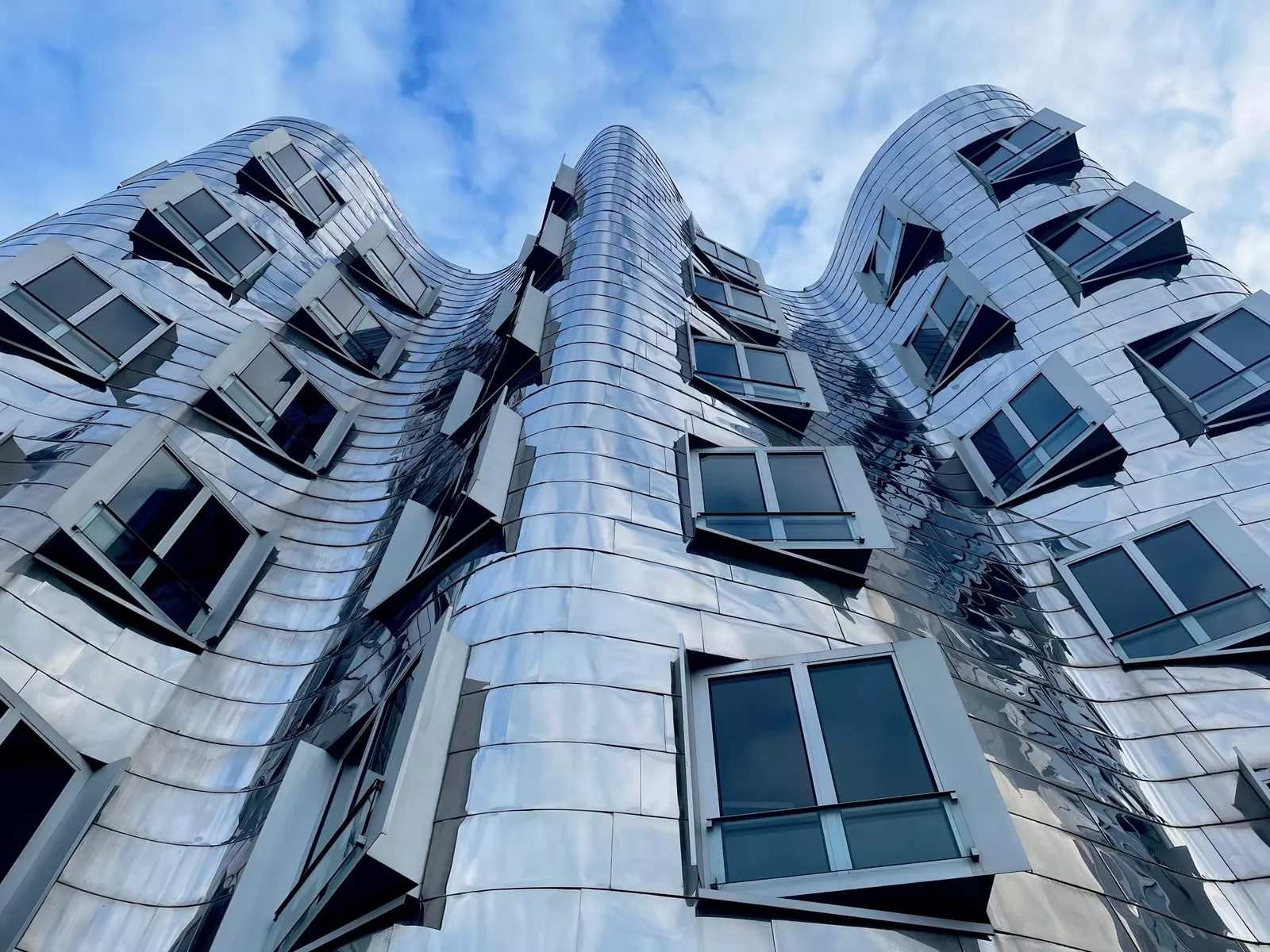
Düsseldorf: museums, architecture… and beer!
I am encased in a thick gray jumpsuit and on my feet I have just put on huge black boots. Thus, with the official uniform of "aerial scout" high, I launch into a step forward as exciting—for me, at least—as the one Armstrong took almost 22 years ago. Well, okay, obviously I'm not going to walk on the moon. Although what I am going to do is go “into orbit”.
However, when I finally get up the nerve to meet the milestone, something goes wrong: after advancing barely a meter my legs tremble; I freeze Wow, it's going to be vertigo, which has come to send the magic of the moment to a ride.
It is also logical: I am on three immense and almost invisible steel nets of 1,500 square meters and three tons of weight that are suspended, 25 meters above the ground, under the glass dome of K21, Düsseldorf's quintessential contemporary art museum. And of course, it's impressive: what did I think this was going to be?
It turns out that this fantasy work of art is nothing more than In Orbit, the installation by the Argentine Tomás Saraceno that for a few years has also been an attraction at the museum —notice for navigators: currently, due to Covid-19, access is not allowed—.
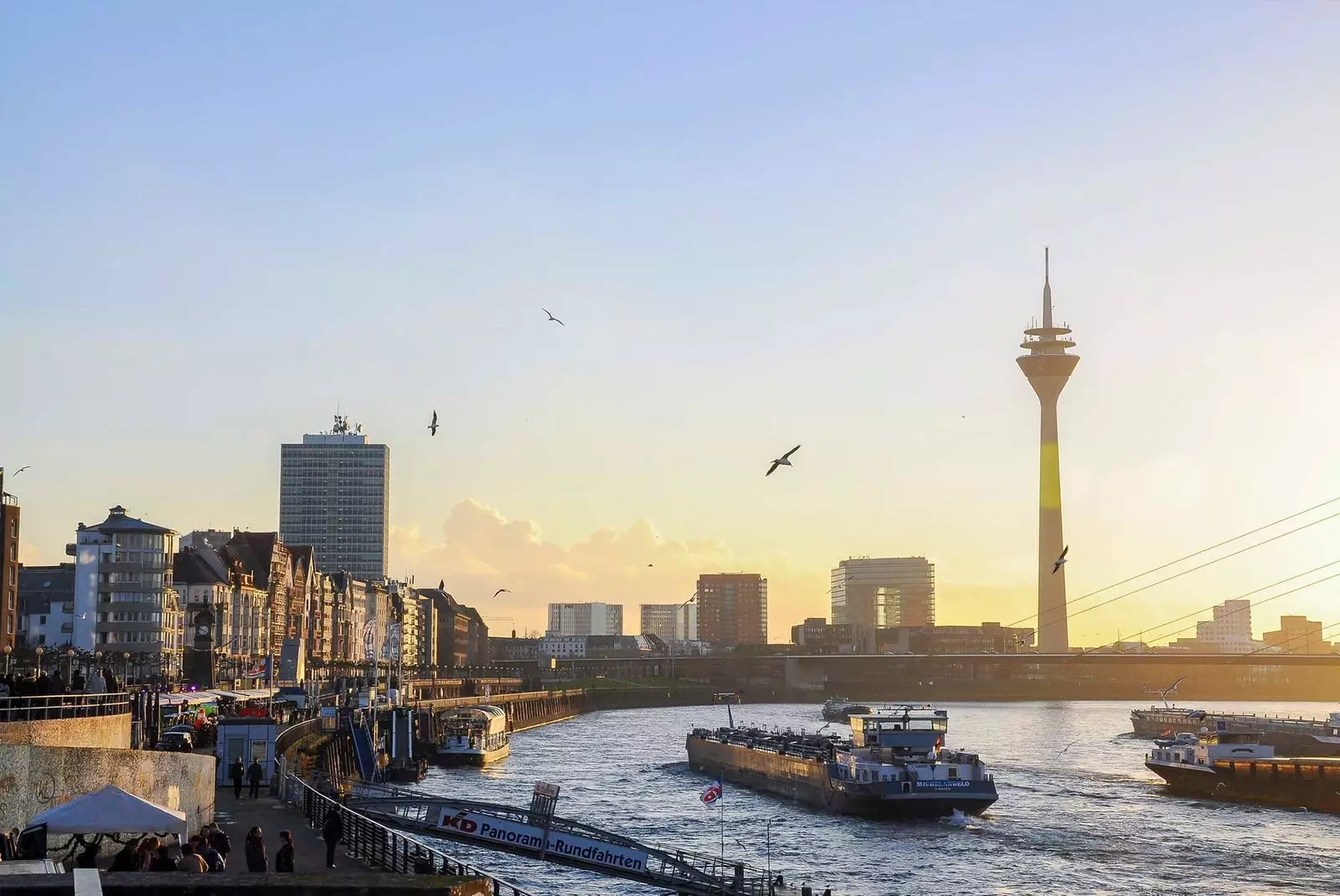
Düsseldorf: museums, architecture… and beer!
A structure that, at first glance, is somewhat surreal: between the three superimposed networks, several huge bubbles look like a sea of clouds. The peculiarity is that one can be part of the work and go through it.
In my case, halfway: after deciding not to look down, into space, under any circumstances, I manage to keep my balance, take small steps and quickly return to solid ground before my heart explodes. what a rush
And yes, Tomás Saraceno deserves that he has dedicated no less than three entire paragraphs of this article to talk about him, but the K21 —Kunstsammlung or 21st century art collection— It's much more than that. To discover it, it is more than necessary to go through its three floors slowly, enter each of its rooms and see, first-hand, what's going on in the world of contemporary art.
Surprises from artists of the stature of Ai Weiwei, Ei Arakawa, Wolfgang Tillmans or Margarete Jakschik appear at every step, and one ends up enchanted with this unusual art binge.
K21's twin sister, K20, can be reached by a courtesy bus that connects both buildings every few minutes. This is located more in the center, very close to the Düsseldorf town hall and in the heart of a historic center that during World War II was reduced by 85% to ashes.
There, under its imposing and undulating gray facade, other names are taking power: works by Kandinsky or Henri Matisse, by Picasso, Miró, Magritte, Dalí, Francis Bacon, or the great collection of the great Paul Klee, they shine on their walls and make my day. But how wonderful is this.
We are recreating ourselves in art, but this city, the state capital of North Rhine-Westphalia, She is very knowledgeable about it. And if not, pay attention to the figures: more than a hundred galleries and a score of museums confirm it. Next to the K20, in fact, the thing only increases.
There, on the Grabbeplatz, are the Kunstverein and the Kunsthalle, both exultant after reopening in May 2021 after months without receiving visitors. A cultural plan that, with this alone, already gives us a couple of days of immersion. And after that? Well then there is all of Düsseldorf to explore, this has only just begun.
OF BEERS AND WALKS ON THE RHINE
Life flows strongly through the streets of Düsseldorf, where, when spring arrives, its neighbors are convinced that they enjoy life outdoors. Therefore, if you land in the city during the months in which the sun is seen in all its splendor, it is best to walk. walk a lot
Starting, why not, with those little streets full of charm around the Altstad t —old area— which, although with a long-suffering past, still has corners that have managed to preserve the charm of distant times.
Red brick facades alternate with others in pastel shades where flowery balconies and colored shutters predict a lot, but a lot of history behind its walls.
Bicycles there —and also there—, small shops, some urban art, restaurants... and bars! About 260, to be exact, concentrated in the downtown streets, especially in the kurzestrasse , unfold their tables and chairs to honor that nickname by which Düsseldorf is known beyond the German borders: the longest bar in the world, they call it. And it will be that they are right.
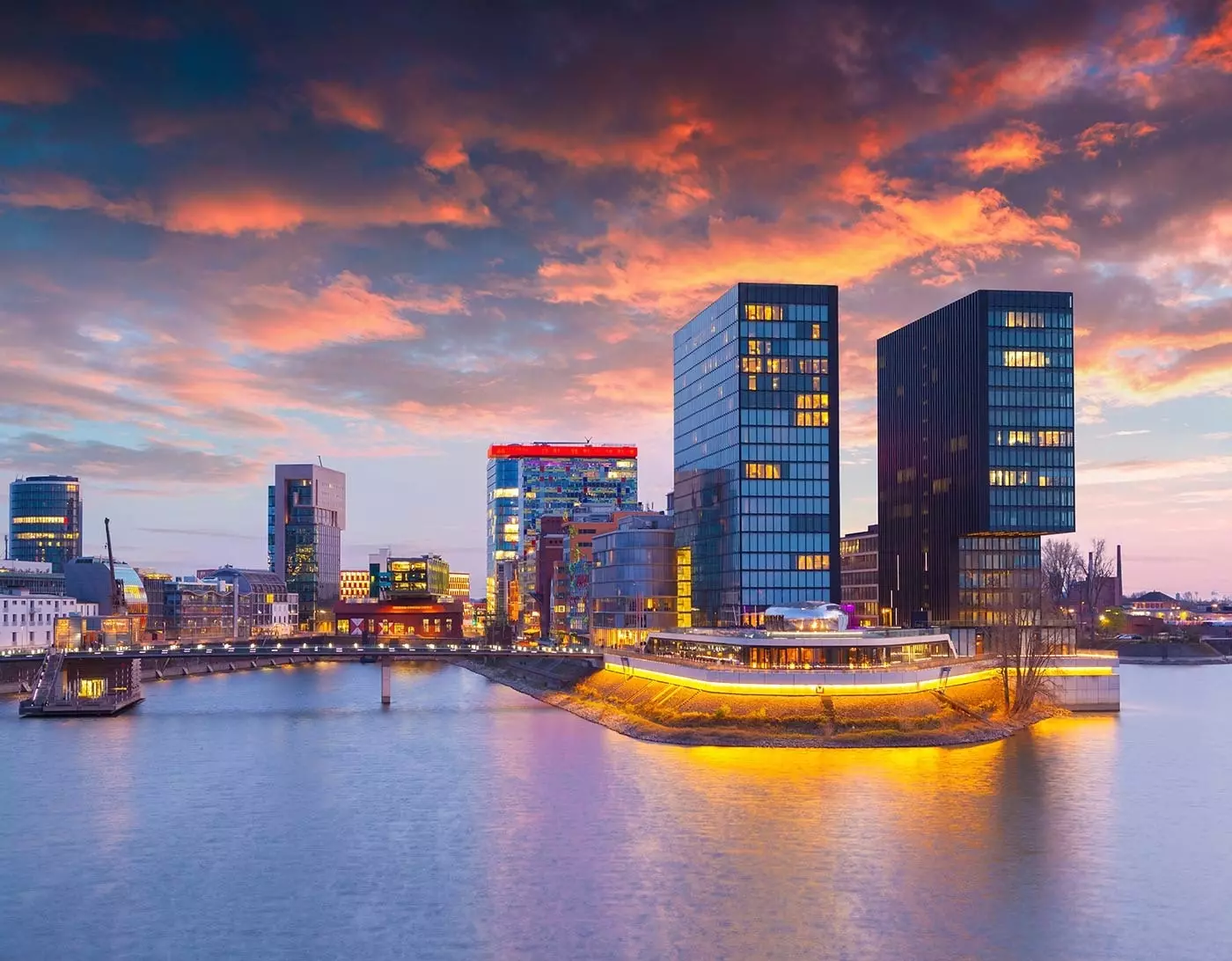
Düsseldorf and the Rhine: the perfect getaway
That is why it may be the right time to check what an Alt, the famous native beer, tastes like. Black and very strong, we will have to take it little by little, its high graduation makes us love it and there is much to be done. For example, approaching Heine Haus, the 1832 house where local poet and writer Heinrich Heine lived, today an important cultural and literary center.
Nearby is also one of the most glamorous — and expensive — streets in Germany. Because if they understand something —also— in Düsseldorf, it is elegance: in the Königsallee , located next to a beautiful canal that in the past formed the moat that surrounded the old city wall, are concentrated the best luxury boutiques and galleries.
Tiffany's, Loewe or Dior... and also the mythical building of Warenhaus Tietz, a huge art nouveau shopping center built in 1909 by the Austrian Joseph Maria Olbrich —one of the founders of the Viennese Secession, by the way.
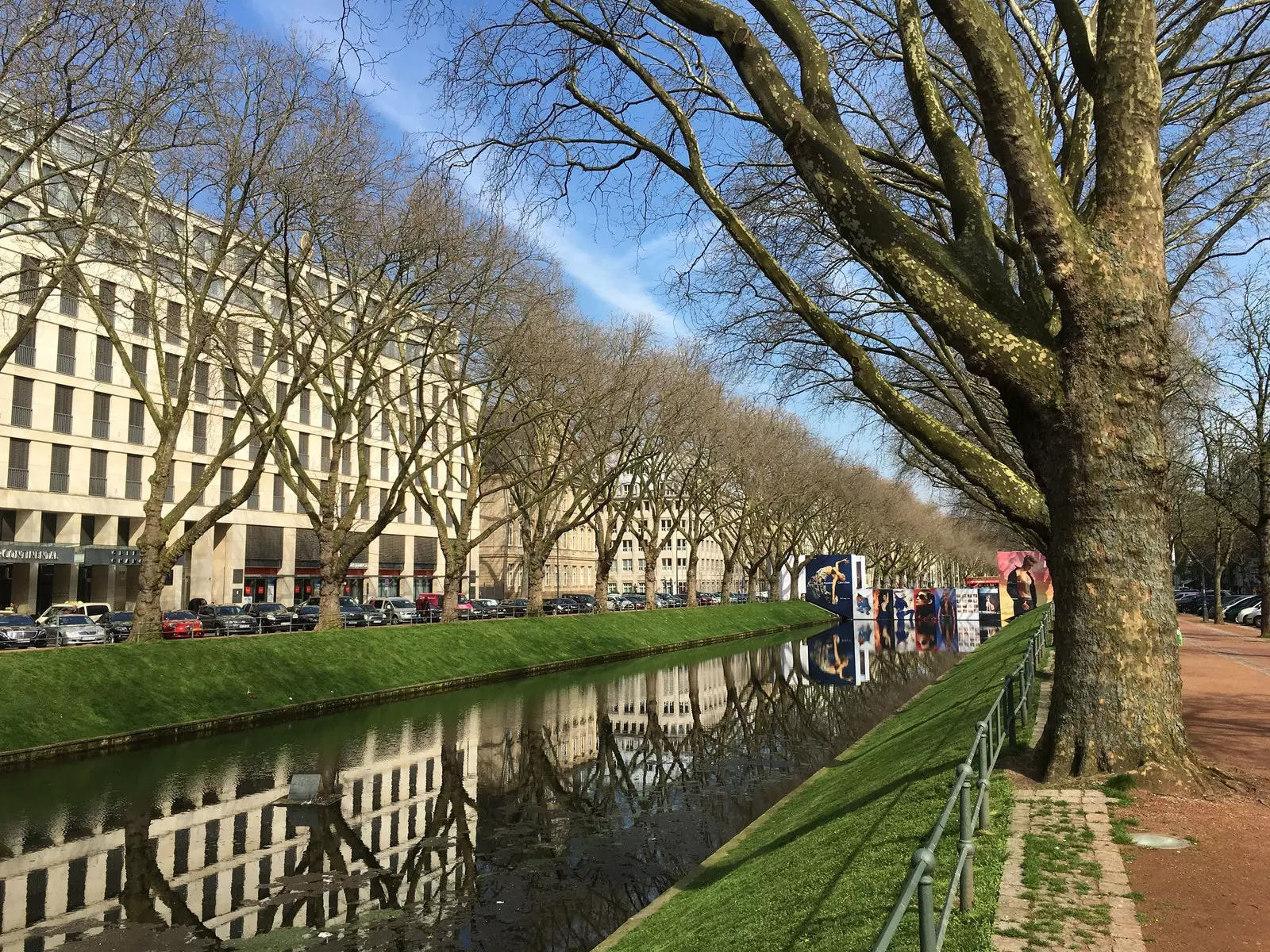
Königsallee: one of the most glamorous – and expensive – streets in Germany
We cross the Burgplatz, they say, one of the most beautiful squares in Germany built after the war, And we travel back in time. There stands the also beautiful Schlossturm tower or castle tower, the only thing left of the old city fortification, burned down in 1872.
Today, by the way, it houses the Maritime Museum and is practically next door to the Basilica of San Lamberto, whose twisted tower —wet wood was used in its reconstruction, hence the result— hides a legend: They say that centuries ago a young woman who swore to be a virgin married there. The church was so shaken to learn that it was false, that its tower was left this way. They say that the day a girl who retains her virginity gets married, she will return to her original form. They've been waiting 200 years...
And now yes: the Rhine. The steps that start from the Burgplatz function as an amphitheater facing the riverbed and they are wonderful to sit on and do nothing. Or well, yes: to observe. Because there is no better scenario in which to take the pulse of city life than this.
Musicians and street artists liven up the days while locals and foreigners stroll, cycle through the area, They chat, eat and, ultimately, enjoy the good things in life. It is precisely the banks of the Rhine that lead us to our next destination: and watch out, because an architectural explosion is coming.
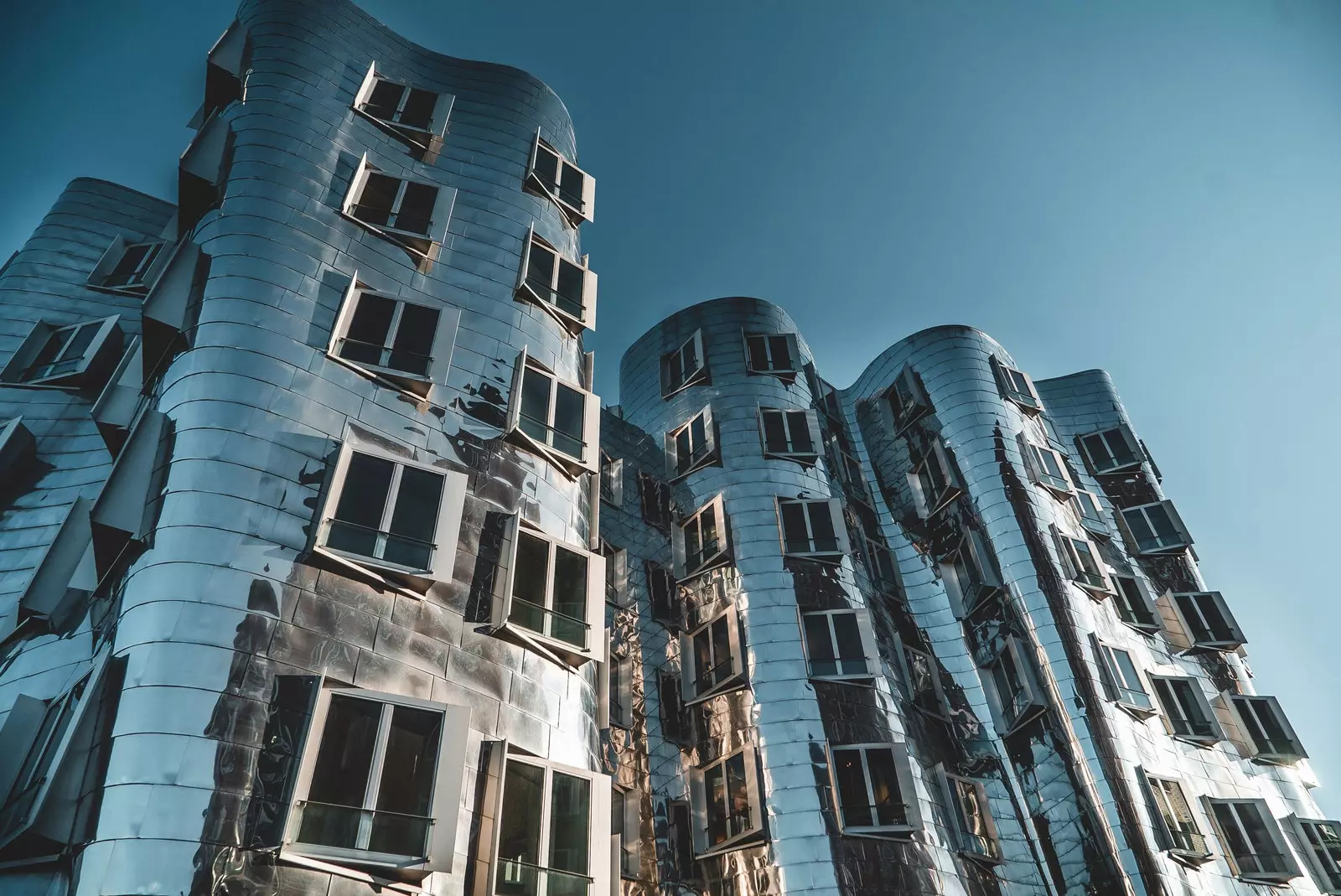
The Neuer Zollhof, by Frank O. Gehry
THE MEDIENHAFEN: BETWEEN HEAVEN AND GROUND
turns out the old port warehouses of the city, already in disuse and practically abandoned, They captured all eyes a decade ago, when it was decided to give them a new life. How? Giving carte blanche to big names in international architecture who got down to work to erect some of the most spectacular buildings in Düsseldorf, many of them converted into icons. The new and the old came to coexist in one space, the MedienHafen. One more attraction for tourism.
The first was the unmistakable Frank O Gehry , which with its set of three dancing constructions of organic design, the Neuer Zollhof, It already completely changed the image of the area back in 99. Little by little the studies of David Chipperfield, Joe Coenen, Steven Holl or Claude Vasconi to bring more and more life.
We fall in love with the colorful facade of the latter, with a kind of trampoline in its highest area, and we miss the popular flossies, amusing large colored dolls made by the artist Rosalie, from Stuttgart, that as if it were an army in full assault, they decorated the facade of the old Rogendorf-Haus for years. Due to the wear of the figures due to inclement weather, they were withdrawn.
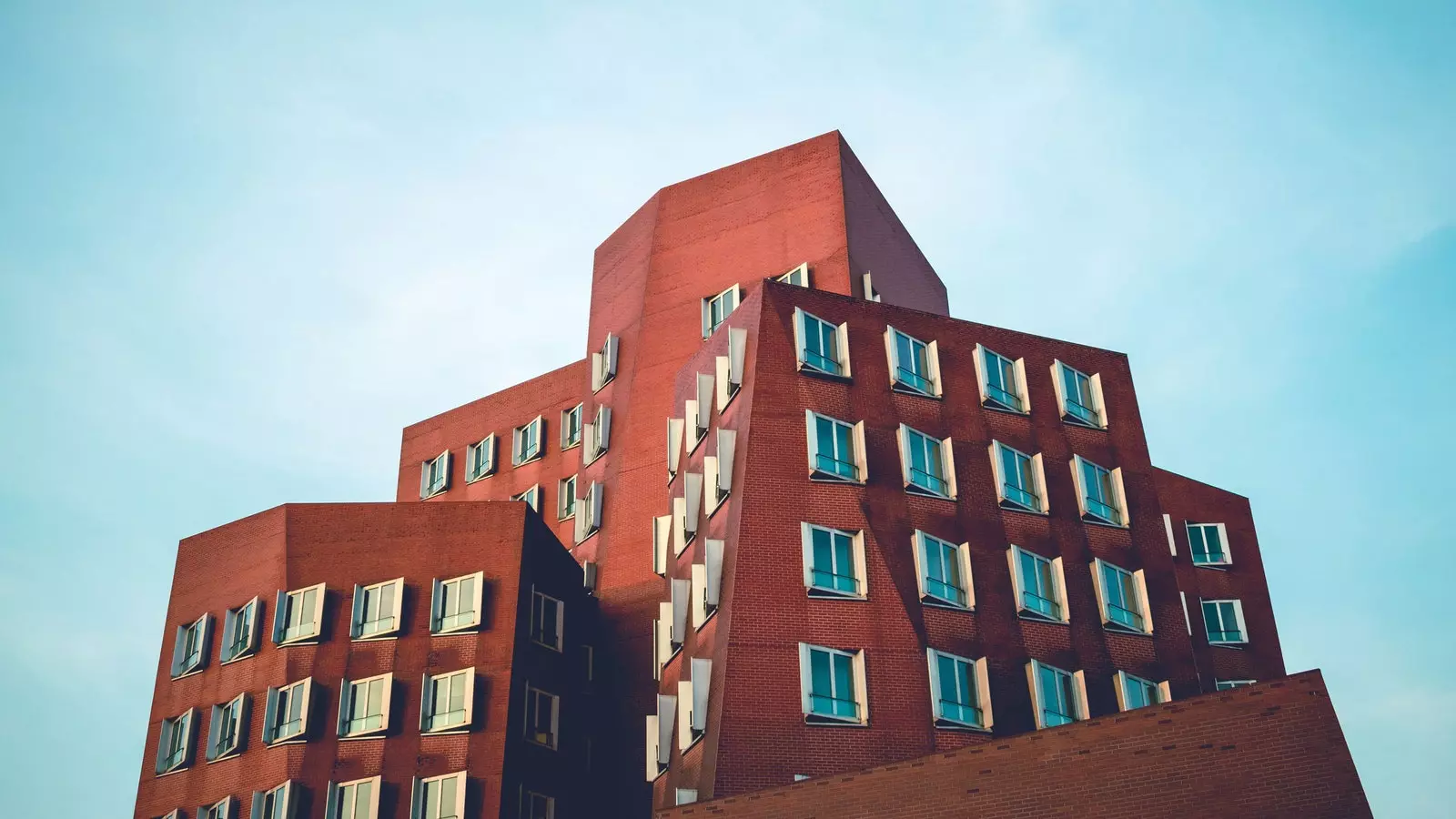
In the MedienHafen, the new and the old coexist in the same space
The ones that do swarm around the area on pedestals —also through the rest of the city— are other figures: the Stylites, realistic sculptures of ordinary people from the city made by the artist Christoph Pöggeler. A couple, a photographer, a worker or a mother with her son are some of them... the grace is in finding them.
The MedienHafen managed to become so fashionable that not only around 700 companies settled in the area, many of them dedicated to communication. It also became, over the years, a gastronomic reference in the city: the best restaurants —eye, foodie friends— are found here.
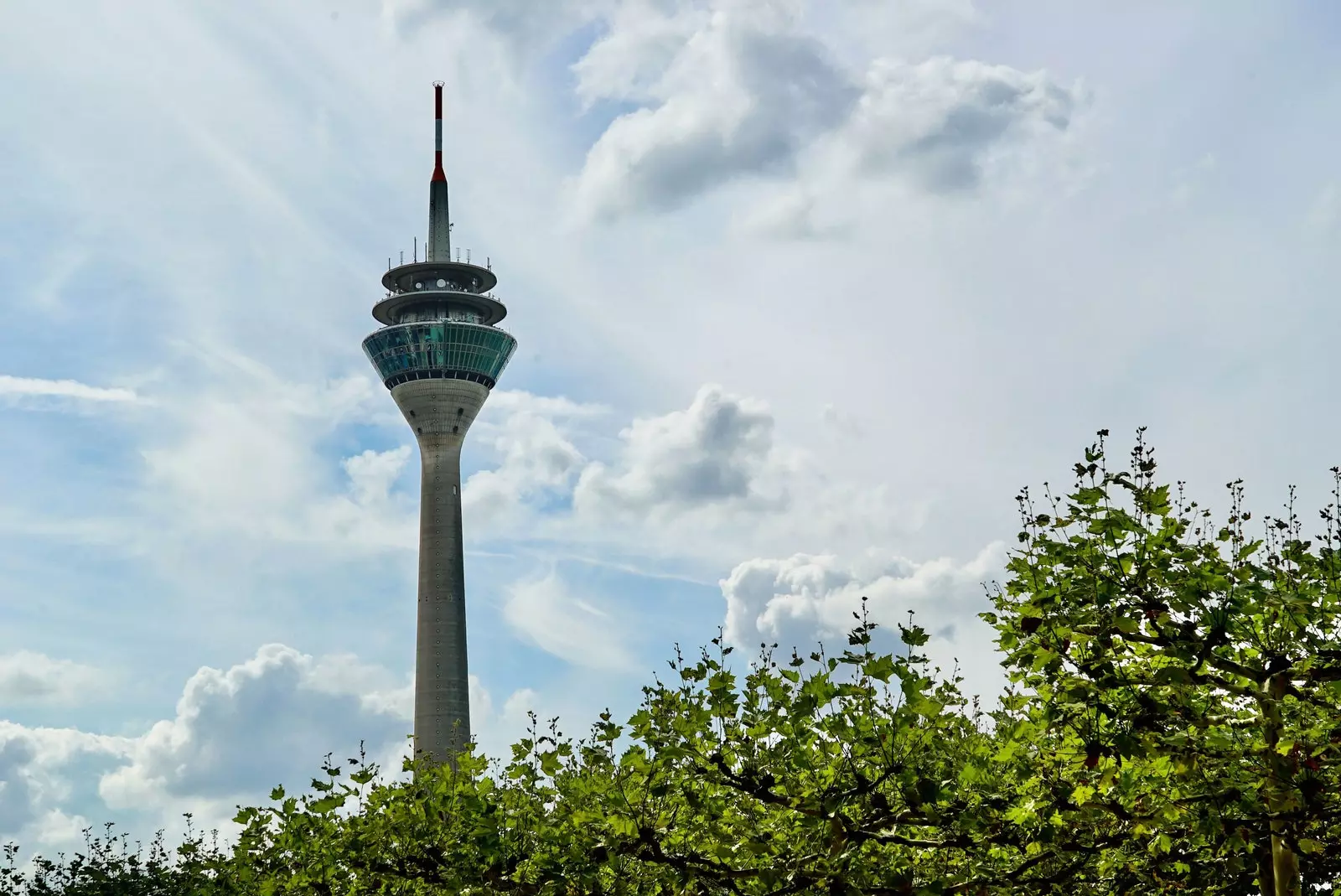
The Rheinturm, "the Rhine Tower"
But things as they are: for a literal experience of height, the best thing is to climb to the top of another of those architectural emblems displayed by Düsseldorf. And this time it's a stone's throw away: in the MedienHafen itself is the Rheinturm, “the Rhine Tower”.
A slender 240-meter construction to climb with any of these excuses: to enjoy a gastro feast at Qomo, his Japanese restaurant; to contemplate the 360º views of the entire city —on clear days you can even see the tower of Cologne Cathedral in the distance—, or to find the best point and end to our particular route through this cosmopolitan, lively and groundbreaking city, which always —always— surprises.
Auf Wiedersehen, Düsseldorf! And thanks for everything.
